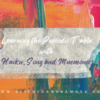Science of Umbilical cord blood banking

This is a must read for Expectant parents. One must know all about umbilical cord blood and their advantages and disadvantages, before heading to cord blood bank. One should be aware of the truth that the odds that a child will ever use his or her own stored cord blood are small. Also currently, it is unknown how long umbilical cord blood will maintain its usefulness while frozen, some says 15, some says 20, some says lifelong. The potential benefits and limitations of allogeneic (from different individual) and autologous (same individual) cord blood banking and transplantation should be known. Even then, storing umbilical cord blood is definitely a good option, but whether one should opt for public or private bank, the decision must be taken after understanding the pros and cons of UCB (Umbilical Cord Blood) and understanding the science around it.
Advantages:
- Collection of stem cells from tissues that are discarded at birth is easier and less expensive than collecting stem cells from a bone marrow aspirate
- During the collection of these tissues, there is no health impact on either the mother or the newborn.
- These cells may be stored frozen and then thawed to provide stem cells for therapeutic use decades after cryogenic storage
- The saved stem cells can be used in the treatment of new born, his/her siblings and even parents
- Umbilical cord blood stem cells have been used in the treatments of over 70-80 medical conditions
- Umbilical cord blood has been shown to be therapeutically useful for rescuing patients with bone marrow-related deficits and inborn errors of metabolism
- Umbilical cord blood offers advantages over bone marrow because cord blood does not require perfect human leukocyte antigen (HLA) tissue matching
- Decreased risk of infectious disease transmission
- Umbilical cord blood stem cells collection is not associated with any ethical, religious or political concerns
- It is advisable for parents from mixed ethnic background to bank cord blood, as it will be harder finding a matching bone marrow donor

Umbilical cord blood banking
Disadvantages:
- Because of the limited volume of cells collected from cord blood, the amount of stem cells in cord blood is approximately 10% less than the amount obtained from bone marrow
- For stem cell transplants to be successful, measurable signs of engraftment must occur. Engraftment is the opposite of rejection and indicates that the stem cell transplant is “working.”
- Currently, it is unknown how long umbilical cord blood will maintain its usefulness while frozen. Research indicates that cord blood stem cells can be maintained up to 15 years, but it is unknown if the cells would be preserved over the entire lifetime of a person.
- There are certain instances in which the use of one’s own umbilical cord blood is contraindicated, as in cases when the defect is of a genetic origin. For example, autologous cord blood stem cells cannot be used to treat malignant cancers such as leukemia because the genetic mutations for the cancer already exist on the DNA of the cord blood.
- The issue of when to clamp and cut the umbilical cord is controversial. Some practitioners might clamp the umbilical cord early in an effort to maximize the amount of cord blood obtained for banking, and thus “short change” the child and allow the infant to become anemic
- The lack of quality measures and hygeine affects the quality of the specimen available for transplant
- Treatment of adults with cord blood typically requires two units of cord blood to treat one adult
Diseases treated:
Four main types of physical conditions are treated with stem cell transplants: cancers, blood disorders, congenital metabolic disorders, and immunodeficiencies.
Before going into Umbilical Cord Blood, one need to understand what is stem cell
Stem cells are unspecialized cells that are the basis of all tissue and organ cells of the body. Stem cells have been isolated from the inner cell mass of 5-day-old embryos as well as collected from the olfactory epithelium of senior citizens. When transplanted into a patient’s body, they can repair or replace the patient’s damaged or diseased cells, improve patient’s health and thus help in saving the patient’s life.
There are three main sources of stem cells in humans: embryonic stem cells, adult stem cells, and umbilical cord stem cells
Embryonic stem cells (ESC) are any day more advantageous for the treatment of disease or injury due to their pluripotent nature; that is, they have the ability to differentiate into all the cells present in the human body derived from the three germ layers (endoderm, mesoderm, and ectoderm). But Human ESC cells and stem cells derived from human fetal tissues brings in moral/ethical concerns. This hinder their widespread implementation.
Adult stem cells are found in various locations in the human body, like liver, skin, gut, but they are most commonly found in bone marrow. The adult stem cell can renew itself and can differentiate to yield some or all of the major specialized cell types of the tissue or organ. They are multipotent, i.e., they may differentiate into derivatives of two of the three germ layers.
Umbilical cord stem cells contain both hematopoietic stem cells and pluripotent mesenchymal cells. Stem cells are recovered postnatally from the umbilical cord, including the umbilical cord blood cells, amnion/placenta, umbilical cord vein, or umbilical cord matrix cells. Umbilical cord blood stem cells have similar health promoting benefits as embryonic stem cells.
Little more on Umbilical cord:
Umbilical cord contains three blood vessels, one vein and two arteries, which coil around the vein in a helical configuration. The three blood vessels are insulated with a gelatinous substance called Wharton’s jelly that protects these vessels and prevents their compression. The umbilical cord is connected to the fetus at the abdominal area at the point, which after birth becomes the umbilicus.
Since the use of embryo derived stem cells is controversial and obtaining adult derived matching cells difficult, many clinicians have started working with stem cells that are obtained from umbilical cord.
Umbilical cord blood cannot be saved if:
If the pregnant woman has a history of group B streptococcus, active genital herpes, or prolonged rupture of membranes and chorioamnionitis, umbilical cord blood is not saved.
History:
The concept of using umbilical cord blood as a source of stem cells for hematopoietic transplantation was first proposed by Edward Boyse in 1983. The first successful umbilical cord blood stem cell transplant was reported as occurring in the late 1980s. The recipient was a 6-year-old American boy from North Carolina who was treated for Fanconi’s anemia (a genetic disorder) at Hospital St. Louis in Paris, France, using cord blood obtained from his younger sister’s birth. The first public umbilical cord blood bank was established in 1991 in New York.
There are three types of umbilical cord blood banks: private, public, and direct-donation banks
The private bank is a commercial, for-profit entity that often advertises directly to expectant parents.
Public umbilical cord blood banks accept altruistic donations of cord blood and do not charge donation fees.
Direct-donation umbilical cord blood banks function as an amalgamation of public and private banks. Directed donation of cord blood should be considered when there is a specific diagnosis of a disease within a family that is known to be amenable to stem cell transplantation.
Umbilical cord blood banking process
The procedure of the umbilical cord blood banking, involves the cutting and clamping of the umbilical cord. A specialized blood bag is then bar-coded for collection of cord blood. For the collection step, the needle of the blood bag is inserted into the umbilical vein and the bag is held at a lower level in order to allow the blood to drain into the bag. Stem cells are then harvested from the cord blood and stored in cryo-vials at -196 degC in liquid nitrogen. Molecular tests are conducted for tissue (HLA) typing.
There are more than 150 public banks and at least 40 private banks actively involved around the world in collecting, processing, testing and cryopreserving UCB for potential future use as therapeutics.
Umbilical cord blood banking Cost
The expense involved in storing the cord blood at private banks is very high. The cost of storing cord blood in India varies from 50,000 to 3,00,000 Rupees. Cost also varies based on technique applied to store the cells. In addition they also charge collection fee.
Future benefits:
Cord blood stem cells are currently being investigated for use in stem cell therapy. They are being investigated for use in autoimmune diseases such as diabetes, rheumatoid arthritis, and systemic lupus erythermatosis (SLE) in order to reprogram or reconstitute the immune system. They are also used in gene therapy, due to their self-renewing properties, as a means of delivering genes to repair damaged cells. Clinical trials are still on, but early indications suggest high potential and hope toward developing effective therapies for the disorders and injuries using umbilical cord blood.
Private cord blood banks in India:
Life cell: https://www.lifecell.in/
Cordlife: https://www.cordlifeindia.com/
Cryoviva: http://www.cryoviva.in/
Cryosave: http://cryo-save.com/en/home












Omg! This is such a revelation as I was not aware! This post is surely very helpful!
This is in depth description for umblical cord and its banking. Thanks for sharing this This will be helpful for many parents.
Detailed post , but since the price is too high , right now in India many cannot afford this .
This is so informative! I believe it has given a complete info on this topic! Lovely
I was not aware about these benefits of umbilical cord. Thanks for sharing some much details on this topic. I am sure this information is not known by many.
Very informative post this is.. umbilical cord blood cells are really life saver!
This is a very informative post. I will pass on the link to a friend who is expecting.
Very informative and in depth post on umbilical cord. I was unaware of its benefits and history…
You have given very depth description dear… My gynac had told me about this before my delivery…
I have stored my umbilical cord with stem cells bank… I think a great initiative for a safe future
Happy to know that you have done it
Thanks to give awesome blog